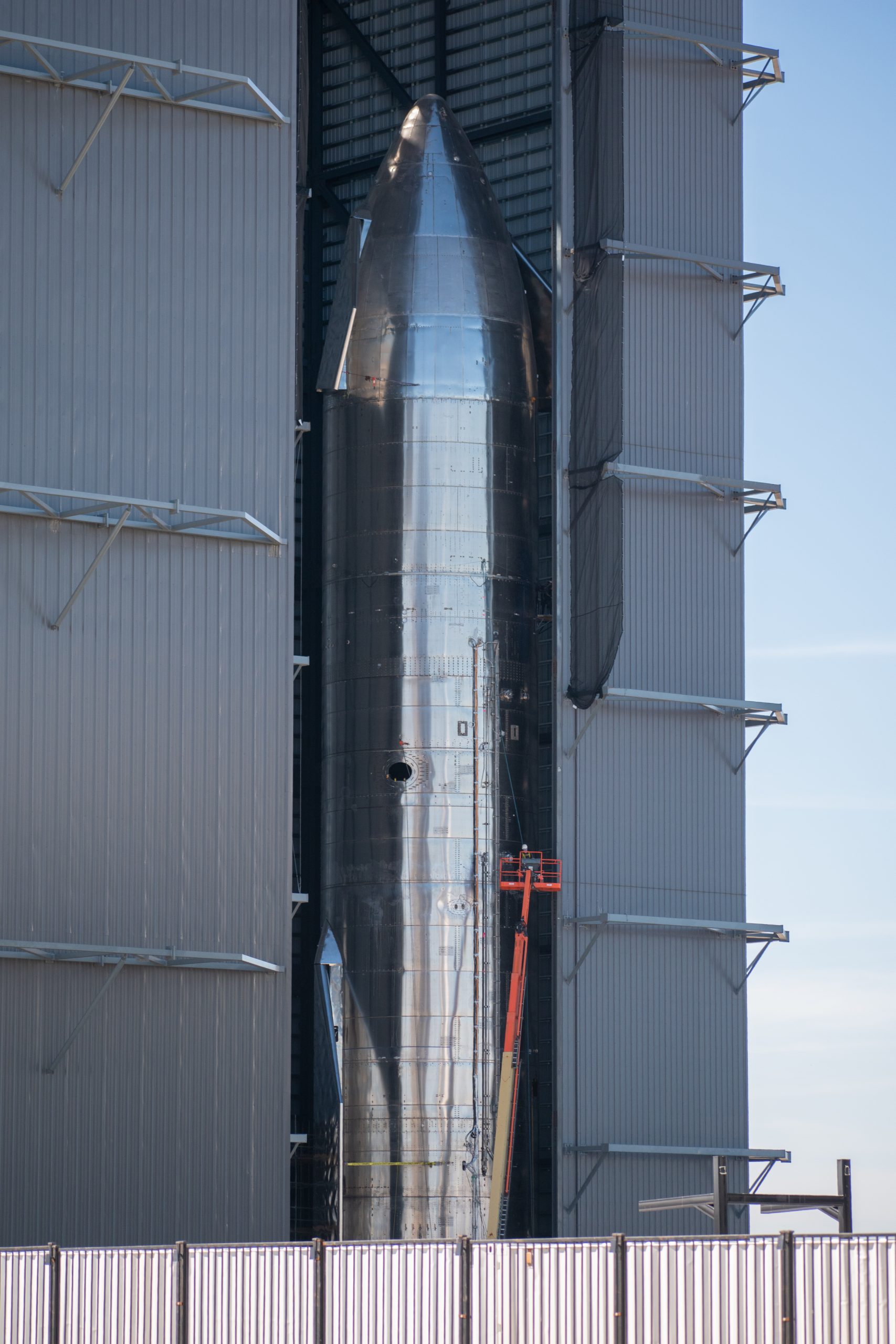Starship Flight 2’s Full-Stack Ready for Rollout as Ship 25 Awaits
SpaceX is gearing up for its second Integrated Flight Test (IFT) of the Starship. Booster 9, which completed its pre-flight testing, is waiting for its partner for the second launch. Ship 25 has already been tested previously, so only full stack testing and regulatory approval are pending for the second flight.
Booster 9 initially had some issues during its static fire test on August 6, with four engines shutting down prematurely. However, SpaceX performed another fire on August 25, which was more successful. According to SpaceX, all 33 engines of the Booster ignited, with two engines shut down shortly after ignition. This is a significant milestone as no other static fire of the Super Heavy has managed to ignite all engines.
To prepare for the hot staging of the upper stage, a 6-foot-high hot staging ring was installed on the Booster. This ring allows the exhaust of the six engines below the Ship to be released while the Ship is still attached to the Booster. During hot staging, three engines on the Booster will still be ignited while the Ship engines are powered up. This reduces gravity loss during flight and addresses fuel settling issues in the upper stage.
After the successful static fire, Booster 9 underwent high-engine static fires, spin primes, and cryogenic proof tests. Compared to previous tests, SpaceX has significantly reduced the testing needed to validate the vehicles. The next step is the stacking of Ship 25 on top of Booster 9.
Ship 25 has been undergoing preparations at the Rocket Garden since it was rolled back for the first Booster 9 static fire. Most of the work on the Ship has been related to thermal protection systems (TPS). The TPS was mainly completed before the static fire campaign, but the ship still had crane lifting points attached to it. These lifting points are no longer needed, so SpaceX started removing them and filling the areas with TPS tiles.
Ship 25 has also received the company’s logo, similar to Ship 24. The remaining tiles will be put on, and then the Ship will be transported back to the launch site for stacking on Booster 9. The exact timing of the transport is still to be determined, but it’s likely to happen late this week or early next week.
Once the stacking is complete, SpaceX has two potential paths for testing. One option is to perform a wet dress rehearsal (WDR) to validate the Ship, Booster, ground infrastructure, and countdown software. During this rehearsal, the vehicle would go through a simulated launch sequence before aborting at T-10 seconds. This would require extensive safety measures, including evacuating the surrounding area and implementing a flight-like exclusion zone.
Alternatively, SpaceX could perform a cryo test of the entire stack to validate its integrity since it has been moved around since the last tanking. SpaceX may choose to perform both tests, one of them, or none at all, depending on their needs and requirements.
While SpaceX is making progress on the hardware side, regulatory approval for the second flight is still pending. The FAA is still investigating the first flight of Starship and has not communicated a timeline for completing the investigation report. SpaceX has started briefing mariner safety boards about a potential flight on September 8, but this does not align with the FAA report and may just be a placeholder.
Once regulatory approval is obtained, SpaceX can proceed with the second flight. If successful, other vehicles like Ship 28 and Booster 10 are already in advanced stages of their build and testing campaigns and could potentially follow quickly. However, the launch site’s condition after the second flight will determine if another flight can be achieved this year.
Overall, SpaceX is making significant progress towards its second Integrated Flight Test of the Starship. With successful static fire tests and ongoing preparations, the company is inching closer to achieving its goals in space exploration.
